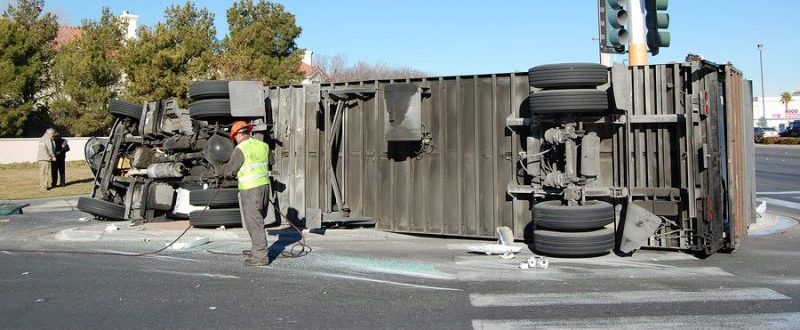Since many trucks weigh thirty times more than most cars, it is no surprise that of the nearly 4,000 people who died in large truck crashes in 2015, over two-thirds of them were passenger vehicle occupants.
Large interstate transportation vehicles are not the only problem. Many intra-city vehicles, like dump trucks and garbage trucks, are almost as large. Moreover, many of these vehicles roam the streets of Manhattan during the early morning hours, when pedestrian traffic is high and visibility is limited.
What are some important legal implications of large truck collisions?
Duty
The law dictates the appropriate standard of care in truck crash and other negligence cases. Although a New York appeals court sharply limited the common carrier doctrine in 1998, this rule remains in full force and effect in New Jersey and most other states.
In short, a common carrier is any driver who conveys people and/or cargo for a fare. This category includes truck drivers, taxi drivers, Uber drivers, and almost all other commercial operators.
Where the enhancement applies, common carriers have a higher duty of care than noncommercial drivers. For example, if a non commercial driver is waiting at a red light and the light turns green, that driver may normally proceed through the intersection. But if the common carrier rule applies, commercial drivers must pause for a few seconds and make sure that there is no approaching cross traffic before proceeding into the intersection.
Negligence “As Such”
If the tortfeasor (negligent driver) violated a safety law, the above analysis does not apply in any state, because of the negligence per se rule. If the legal violation substantially cause the car crash, the tortfeasor is automatically liable for damages as a matter of law, unless a legal defense applies.
In many states, the negligence per se doctrine only applies to penal statutes, like DUI. But in New York, the rule also applies to common traffic violations, such as failure to signal a lane change, or municipal ordinances, such as parking in a “no parking” zone.
Respondeat Superior
Because of the catastrophic nature of the injuries in these cases, the tortfeasor often does not have enough insurance coverage to fully compensate the victim. Fortunately, the respondeat superior rule (translated to english as “let the master answer”) usually applies in truck crash cases. The employer is liable for damages if the tortfeasor was an employee who, at the time of the crash, was acting within the scope of employment. Furthermore, the accident must have been foreseeable to the employer.
All three prongs of this rule are defined very broadly. An “employee” could be a W-2 wage earner, an independent contractor, an owner-operator, or even an unpaid volunteer. “Scope of employment” includes any activity that benefits the employer, which could even mean driving an empty truck back to a warehouse. Finally, it is perfectly foreseeable that any truck driver could cause a car crash.
Other common employer liability theories include negligent hiring and negligent entrustment.
Insurance Company Defenses
While personal injury attorneys are committed to maximum compensation for victims in these crashes, insurance company lawyers will do anything possible under the law to reduce or deny compensation.
Frequently, tortfeasors try to use the contributory negligence rule. This doctrine shifts blame to the victim in the event that both parties were responsible. For example, the tortfeasor may have been speeding and the victim might have made an illegal lane change.
New York is a pure comparative fault state, so the judge divides damages strictly according to fault. So, in the above example, if the jury divided fault 50-50 and the damages were $100,000, the tortfeasor must pay the victim $50,000.
Talk to a lawyer today to discuss your legal options, because accident victims have a limited amount of time to act.
